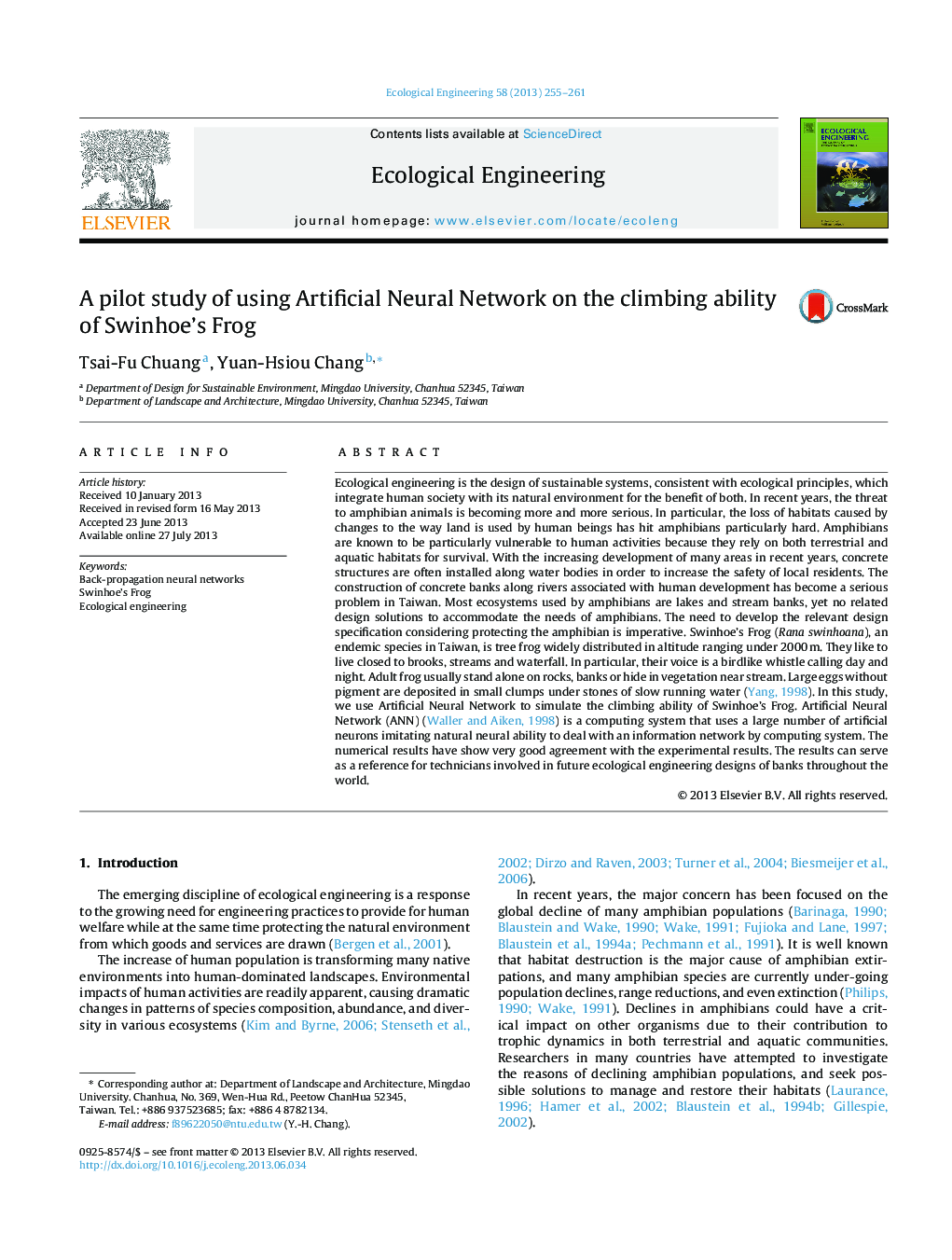| Article ID | Journal | Published Year | Pages | File Type |
|---|---|---|---|---|
| 6302528 | Ecological Engineering | 2013 | 7 Pages |
Abstract
Ecological engineering is the design of sustainable systems, consistent with ecological principles, which integrate human society with its natural environment for the benefit of both. In recent years, the threat to amphibian animals is becoming more and more serious. In particular, the loss of habitats caused by changes to the way land is used by human beings has hit amphibians particularly hard. Amphibians are known to be particularly vulnerable to human activities because they rely on both terrestrial and aquatic habitats for survival. With the increasing development of many areas in recent years, concrete structures are often installed along water bodies in order to increase the safety of local residents. The construction of concrete banks along rivers associated with human development has become a serious problem in Taiwan. Most ecosystems used by amphibians are lakes and stream banks, yet no related design solutions to accommodate the needs of amphibians. The need to develop the relevant design specification considering protecting the amphibian is imperative. Swinhoe's Frog (Rana swinhoana), an endemic species in Taiwan, is tree frog widely distributed in altitude ranging under 2000Â m. They like to live closed to brooks, streams and waterfall. In particular, their voice is a birdlike whistle calling day and night. Adult frog usually stand alone on rocks, banks or hide in vegetation near stream. Large eggs without pigment are deposited in small clumps under stones of slow running water (Yang, 1998). In this study, we use Artificial Neural Network to simulate the climbing ability of Swinhoe's Frog. Artificial Neural Network (ANN) (Waller and Aiken, 1998) is a computing system that uses a large number of artificial neurons imitating natural neural ability to deal with an information network by computing system. The numerical results have show very good agreement with the experimental results. The results can serve as a reference for technicians involved in future ecological engineering designs of banks throughout the world.
Related Topics
Life Sciences
Agricultural and Biological Sciences
Ecology, Evolution, Behavior and Systematics
Authors
Tsai-Fu Chuang, Yuan-Hsiou Chang,
